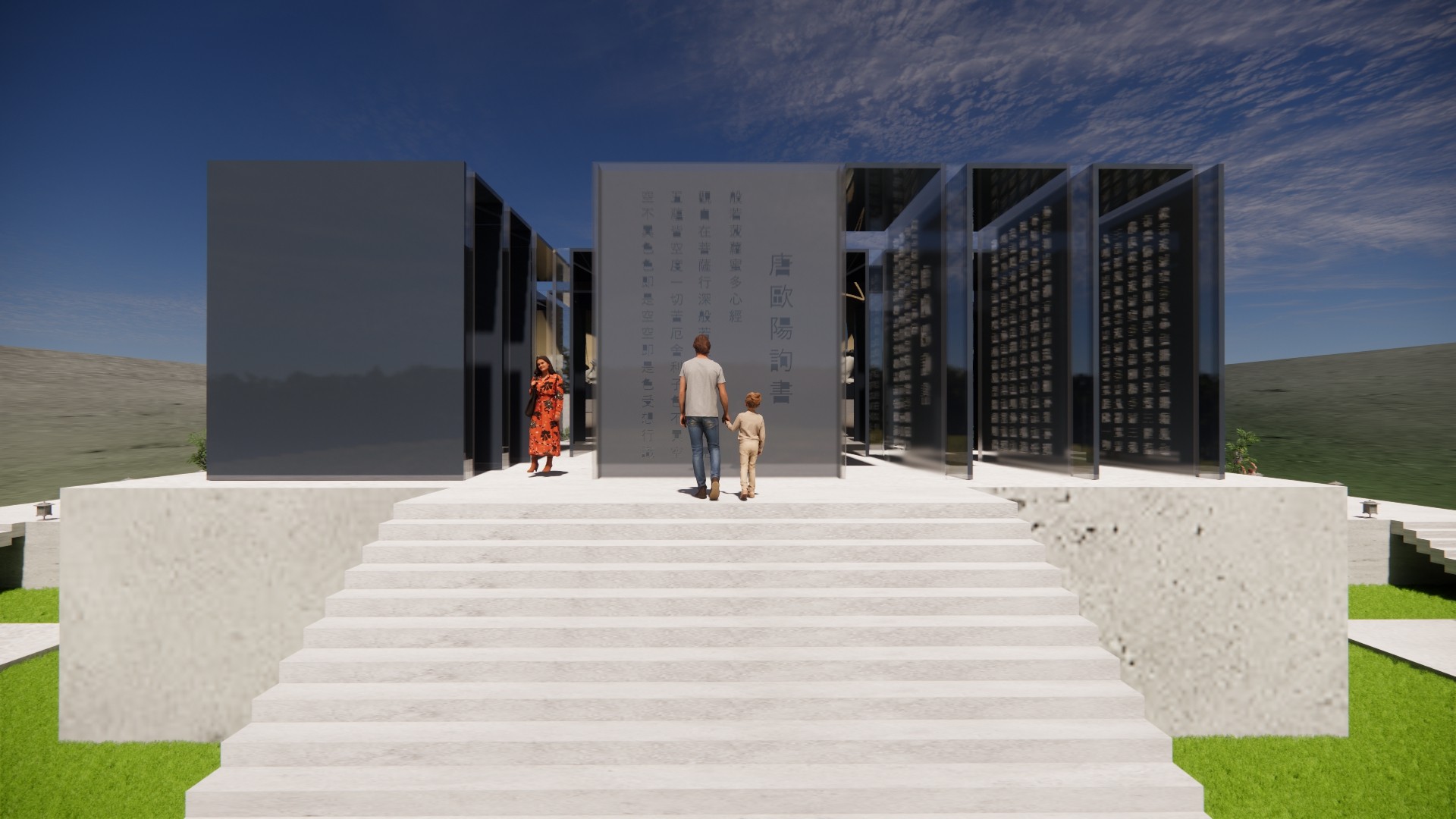The project includes the design of Gate of Liberations, Buddhist Scripture Installation, Heavenly King's Hall and Main Hall.
Gate of Liberation: The design of the gate uses traditional wood materials as well as modern glass. The names of the temples are embedded in the walls of the entrances on both sides, which are lit by interior lights. Inside, the walls display four illustrations related to Buddhism history and stories. Part of the wall made of glass allows sunlight to enter the room, meeting the need for daylight. The bell and drum displayed indoors can also be seen outdoors, where they are placed to better protect objects from damage. Through the door on the other side, visitors can enter the temple.
Buddhist Scripture Installation: The design was inspired by the Water-Moon Monastery by Kris Yao. Each panel consists of a large glass wall and a marble wall. The glass incorporates Buddhist texts, while the marble is used to prevent seeing scriptures overlapping. The space between the two walls is designed to allow sunlight to enter from above, which is refracted to make the text more visible. The space reserved between the glass and marble walls also has a light system installed, so that the scriptures can be seen clearly when the lights are turned on at night. The placement of the roof between the panels acts as a shade and is arranged in such a way that the top of the roof appears as a Buddhism symbol.
Heavenly King's Hall: The design of the Heavenly King’s Hall was inspired by the Gautama Buddha and the Water-Moon Guan Yin’s lotus throne. The structure chooses to retain the shape of the lotus petals, and petals spliced into an irregular translucent wall. Maitreya sits in the middle of the large lotus wall, Water-Moon Guanyin is placed on the center in the small lotus wall on the both sides. The Futon is placed in front of the Buddha statue for worship purposes.
Main Hall: The design of the main hall was inspired by the wooden windows and lanterns of traditional temples. The outer walls of the main hall retain the original wooden window decoration patterns, while the interior are designed with glass walls, so that sunlight can enter the hall.. An indoor lighting system can provide illumination at night. Because the main hall is located at the highest point of the temple, the night light shining from inside the Main Hall will make the structure look like a giant lantern rising slowly. The main hall houses the statue of Gautama Buddha and futon for worship. Therefore, the monks can preach and worship in the Main Hall.
This modern Buddhist temple was named Majesty No.8 to emphasize the solemnity of the temple itself. At the same time, eight Buddhist elements are incorporated into the architecture, including: lotus, lantern, longevity lamp, scripture, incense burner, Buddhism symbol, stone lion and futon.
Each main area is connected by a stone staircase. The connection and the design of the stone staircase are inspired by the 16th-century Ming Dynasty novel “Journey to the West”, which is well-known in China. In the novel, four monks must pass total eighty-one difficulties to see Gautama Buddha and bring home the scriptures. It reminds visitors of the hardship of the scriptures and the difficulties they experienced along the way.
Statement
The idea of my thesis project is to design a temple where modern art meets traditional culture. While preserving the temple’s original culture and sense of solemnity, the shape and materials of modern architecture are used to redesign the temple.
The reason I choose to design a temple is because when I was young, I would follow my elders to go to the temple to worship Buddha on festivals, which became an indispensable memory of my childhood. Another reason is because my mother and grandmother are Buddhists, they will read the Lotus Sutra, under their influence, I can recite some sutras from childhood, but do not know its meaning. Through the temple design, I want to interpret and understand it from a new angle, and integrate the Buddhist scriptures into the design.






